When it comes to adding serious heat and complex flavor to your meals, few salsas can compete with the magnificent habanero salsa. Furthermore, this vibrant condiment brings together the perfect balance of fruity sweetness and intense spice that will transform any ordinary dish into an extraordinary culinary experience. Additionally, habanero salsa has become increasingly popular among heat enthusiasts who crave that perfect combination of flavor and fire.
Moreover, this recipe represents years of perfecting the ideal blend of fresh ingredients and traditional techniques. Subsequently, you’ll discover that making homemade habanero salsa is not only surprisingly simple but also incredibly rewarding. In fact, once you taste this homemade version, you’ll never want to return to store-bought alternatives.
Table of Contents
- Why I Absolutely Love This Recipe
- Key Ingredients That Make the Magic Happen
- Step-by-Step Instructions for Perfect Habanero Salsa
- Proper Storage for Maximum Freshness
- Expert Tips and Tricks for Success
- Nutritional Benefits and Information
- More Sauce Recipes to Explore
Why I Absolutely Love This Recipe
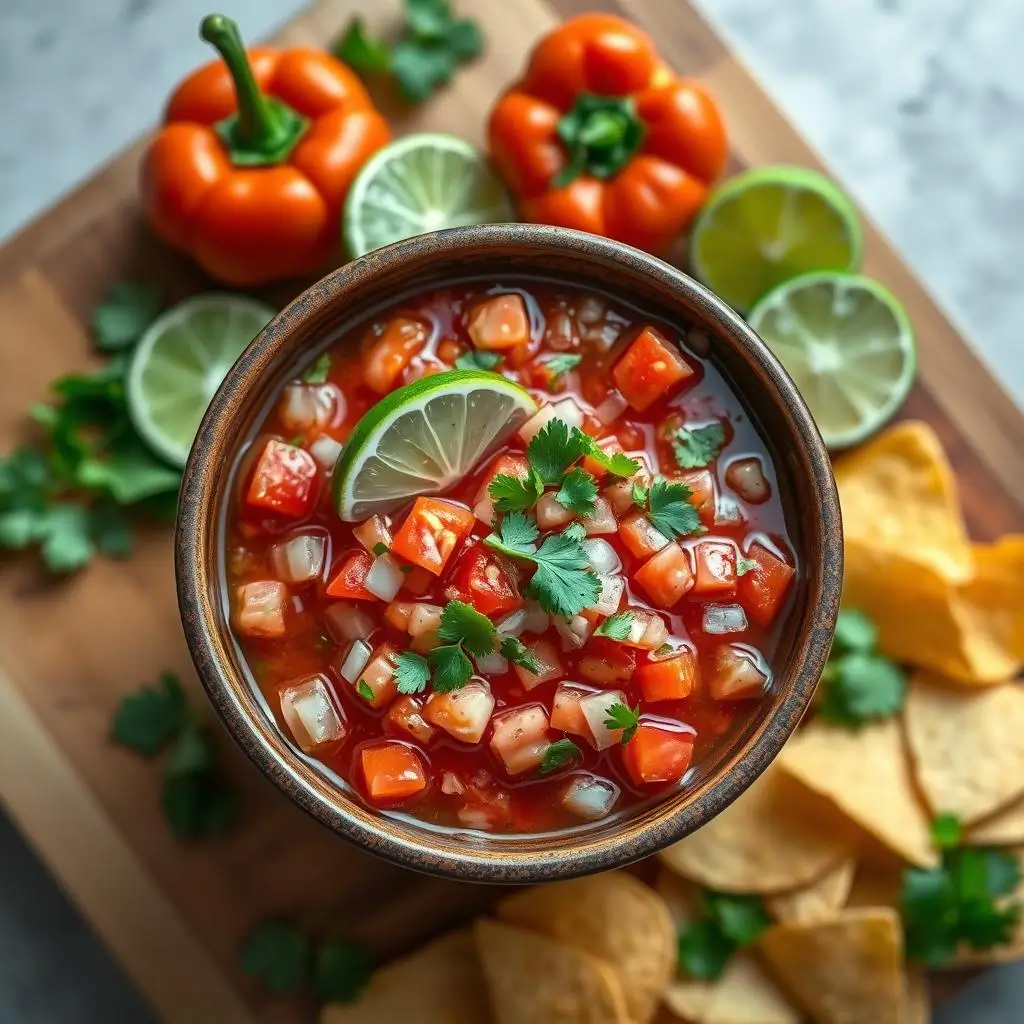
First and foremost, this habanero salsa recipe holds a special place in my heart because it was inspired by my grandmother’s traditional Mexican cooking. Additionally, what makes this recipe truly exceptional is how it manages to showcase the habanero’s natural fruity notes while delivering that signature heat that makes your taste buds dance.
Furthermore, I’m passionate about this recipe because it’s incredibly versatile and can elevate everything from simple tortilla chips to grilled meats and seafood. Moreover, the combination of fresh ingredients creates layers of flavor that develop beautifully over time. In addition, this salsa has become my go-to recipe for impressing guests at gatherings and barbecues.
Similarly, I love how this recipe allows for customization based on your heat tolerance. Consequently, you can adjust the number of habaneros to create the perfect level of spiciness for your palate. Therefore, whether you’re a heat novice or a seasoned spice warrior, this recipe can be tailored to your preferences.
Key Ingredients That Make the Magic Happen
To begin with, let’s explore the essential components that make this habanero salsa truly exceptional. First, the star ingredient is obviously the habanero peppers themselves, which provide both heat and a distinctive fruity flavor. Additionally, we’ll need fresh tomatoes that serve as the perfect base for our salsa.
Moreover, red onions add a sharp bite that complements the habaneros beautifully. Furthermore, fresh garlic provides depth and complexity to the overall flavor profile. In addition to these basics, we’ll incorporate fresh cilantro for its bright, herbaceous notes.
Similarly important are the lime juice and salt, which not only enhance all the other flavors but also help preserve the salsa’s freshness. Finally, a touch of cumin adds an earthy warmth that rounds out the flavor profile perfectly.
Essential Ingredients:
- 6-8 fresh habanero peppers (adjust based on heat preference)
- 4 large ripe tomatoes
- 1 medium red onion
- 4 cloves fresh garlic
- 1/2 cup fresh cilantro
- 3 tablespoons fresh lime juice
- 1 teaspoon salt
- 1/2 teaspoon ground cumin
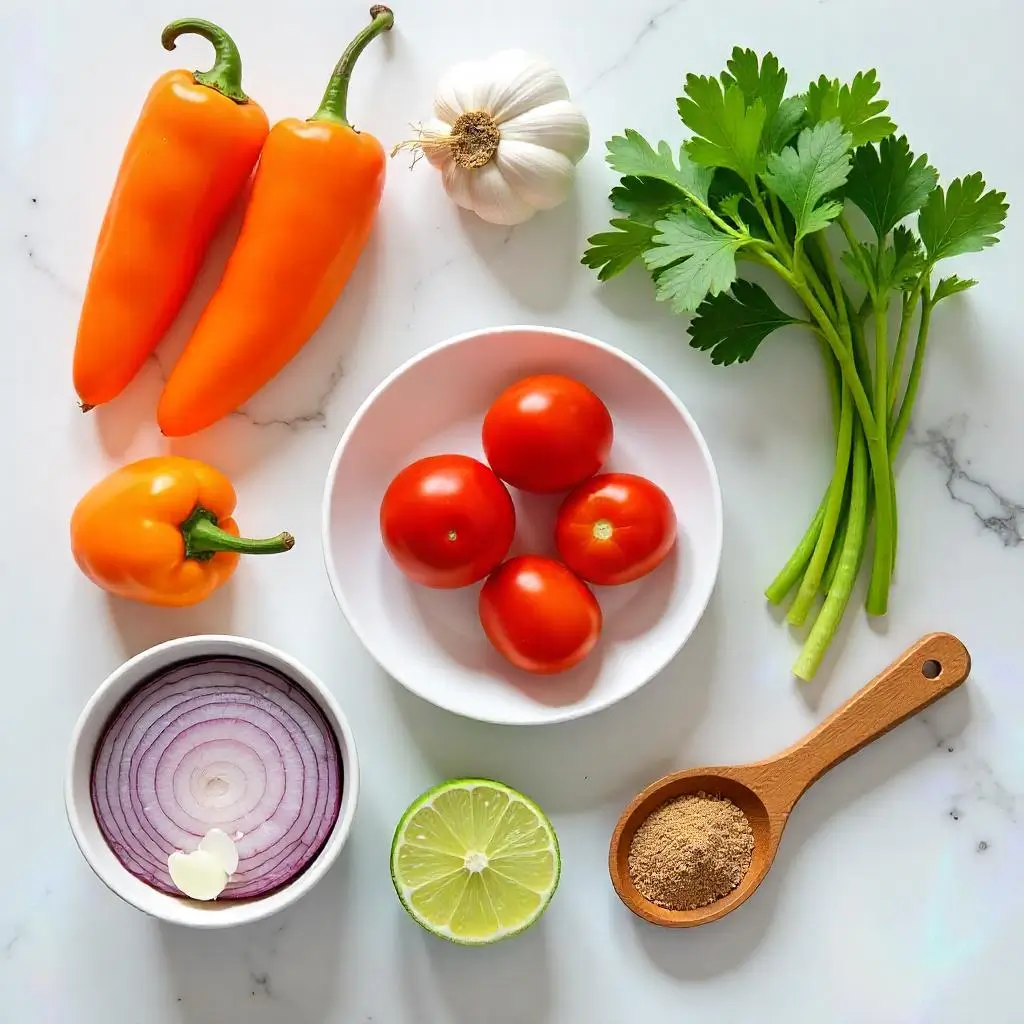
Step-by-Step Instructions for Perfect Habanero Salsa
Preparation Phase
To start, wash all your fresh ingredients thoroughly under cold running water. Next, gather all your equipment including a sharp knife, cutting board, and food processor or blender. Additionally, make sure to wear gloves when handling the habaneros to protect your skin from the oils.
Step 1: Prepare the Habaneros
First, carefully remove the stems from the habanero peppers. Then, slice them in half lengthwise and remove the seeds if you prefer a milder salsa. However, if you want maximum heat, leave the seeds intact. Subsequently, roughly chop the peppers into smaller pieces.
Step 2: Prepare the Tomatoes
Meanwhile, core the tomatoes and cut them into quarters. Furthermore, if you prefer a less watery salsa, you can remove some of the seeds and pulp at this stage. Additionally, this step helps concentrate the flavors.
Step 3: Chop the Aromatics
Simultaneously, peel and roughly chop the red onion into large chunks. Moreover, peel the garlic cloves and give them a rough chop as well. In addition, remove the cilantro leaves from their stems and give them a preliminary chop.
Step 4: Blend the Ingredients
Now, add the habaneros to your food processor first, followed by the garlic. Then, pulse several times until they’re finely minced. Next, add the onions and pulse until they reach your desired consistency. Subsequently, add the tomatoes and pulse until everything is well combined but still chunky.
Step 5: Season and Finish
Finally, add the cilantro, lime juice, salt, and cumin to the mixture. Then, pulse a few more times to incorporate all the seasonings. Taste and adjust the seasoning as needed, adding more salt, lime juice, or cumin according to your preference.
Step 6: Rest and Develop Flavors
Most importantly, transfer the salsa to a bowl and let it rest for at least 30 minutes before serving. During this time, the flavors will meld together beautifully, creating a more cohesive and delicious final product.
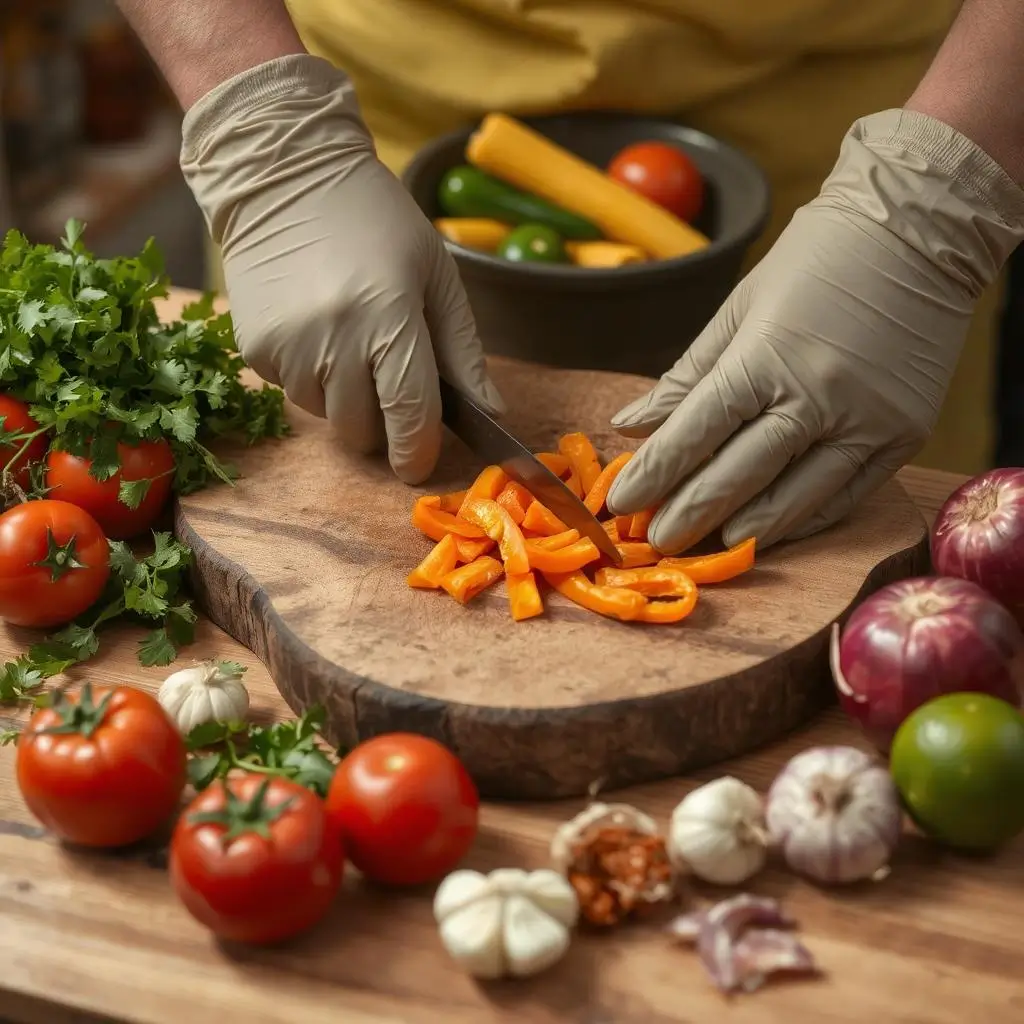
Proper Storage for Maximum Freshness
When it comes to storing your habanero salsa, proper techniques will ensure maximum freshness and flavor retention. First, always store the salsa in an airtight glass container in the refrigerator. Additionally, glass containers are preferable because they won’t absorb the strong flavors and oils from the peppers.
Furthermore, your homemade habanero salsa will stay fresh for up to one week when properly refrigerated. However, for best quality and flavor, try to consume it within 3-4 days. Moreover, always use clean utensils when serving to prevent contamination.
Alternatively, you can freeze portions of the salsa in freezer-safe containers for up to three months. Nevertheless, keep in mind that the texture may change slightly after freezing, becoming somewhat softer than fresh salsa.

Expert Tips and Tricks for Success
Heat Level Management
To control the heat level effectively, start with fewer habaneros and gradually add more until you reach your desired spiciness. Additionally, removing the seeds and white membranes will significantly reduce the heat while maintaining the fruity flavor.
Flavor Enhancement Techniques
For even better flavor development, consider roasting the tomatoes and onions lightly before adding them to the salsa. Furthermore, this technique adds a subtle smoky depth that complements the habaneros beautifully.
Consistency Control
If you prefer a chunkier salsa, pulse the ingredients fewer times and add them in stages. Conversely, for a smoother consistency, blend the ingredients longer and add a small amount of water if needed.
Safety Considerations
Always wear gloves when handling habaneros, and avoid touching your face or eyes. Moreover, clean all surfaces and utensils thoroughly with a bleach solution after preparation.

Nutritional Benefits and Information
Surprisingly, this habanero salsa is not only delicious but also packed with nutritional benefits. To begin with, habanero peppers are rich in vitamin C, containing even more than citrus fruits. Additionally, they provide vitamin A, which supports eye health and immune function.
Furthermore, the capsaicin in habaneros may help boost metabolism and provide anti-inflammatory benefits. Moreover, tomatoes contribute lycopene, a powerful antioxidant that supports heart health.
Approximate Nutrition Per 2-Tablespoon Serving:
- Calories: 12
- Carbohydrates: 3g
- Fiber: 1g
- Vitamin C: 45% Daily Value
- Vitamin A: 15% Daily Value
More Sauce Recipes to Explore
- Hot Sauce Recipe
- Chipotle Tahini Sauce
- Nacho Cheese
- Wingstop Ranch
- Creamy Béchamel Sauce
- Cowboy Butter
- Rotel Dip
- BLT Dip
- Sauce vierge
- Pesto sauce
- Tomato Sauce
- Gochujang Sauce
- Green Tahini Sauce
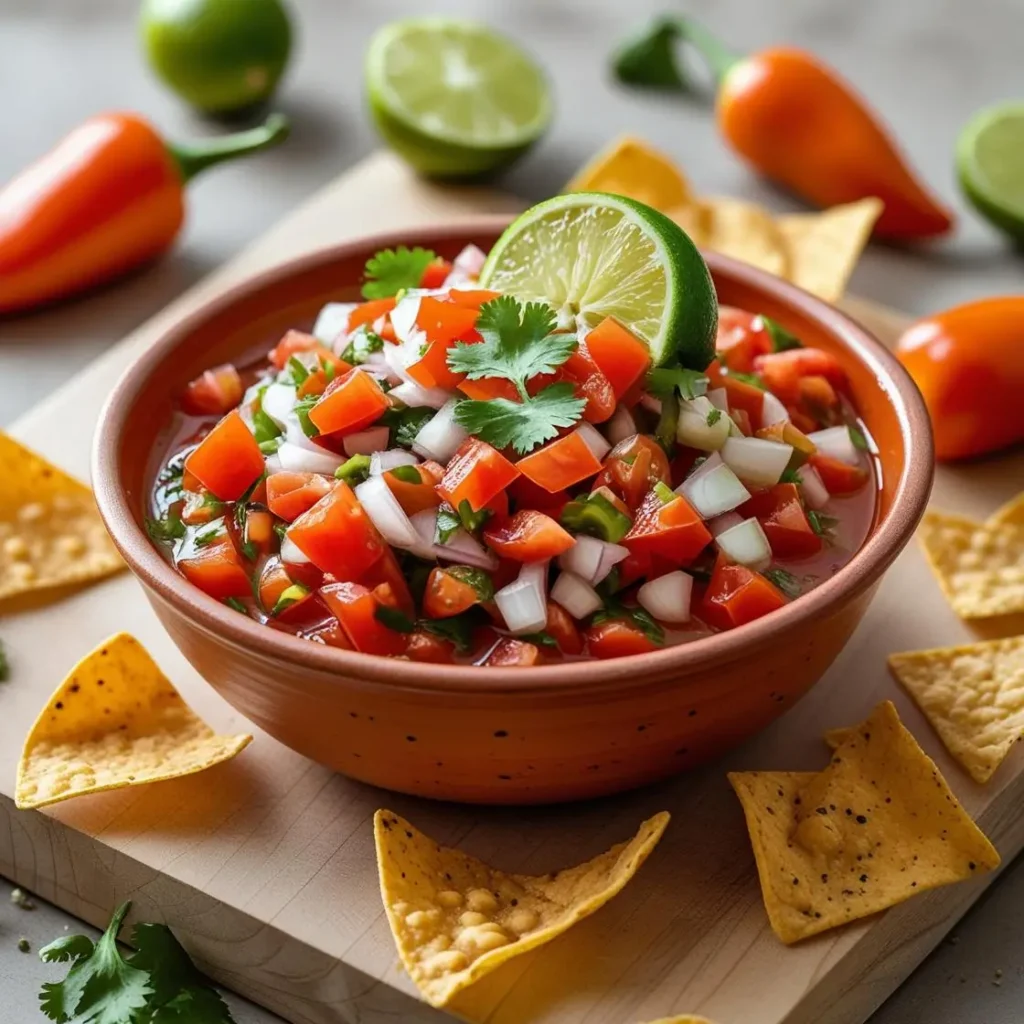
In conclusion, this habanero salsa recipe represents the perfect marriage of heat, flavor, and freshness that will revolutionize your approach to spicy condiments. Moreover, the simplicity of the preparation process makes it accessible to home cooks of all skill levels.
Furthermore, the versatility of this salsa means you’ll find countless ways to incorporate it into your cooking repertoire. Whether you’re using it as a dip, a marinade ingredient, or a flavor enhancer for your favorite dishes, this habanero salsa delivers consistent results every time.
Additionally, the satisfaction of creating this restaurant-quality condiment in your own kitchen is truly rewarding. Therefore, I encourage you to gather your ingredients and embark on this flavorful journey that will undoubtedly become a staple in your culinary adventures.
Finally, remember that cooking is about experimentation and personal preference, so don’t hesitate to adjust this recipe to suit your taste buds perfectly.
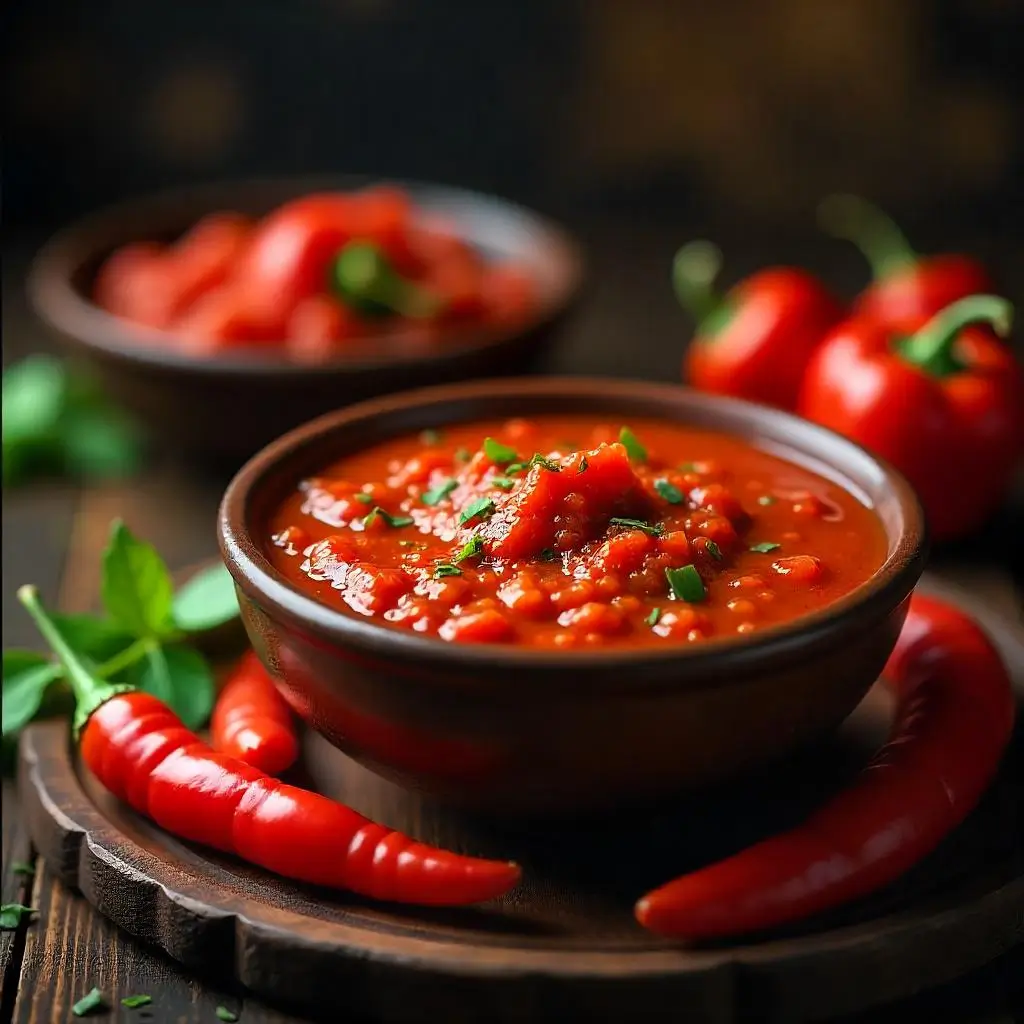
How to Prepare Habanero Salsa Recipe: Fresh, Fiery & Irresistible
Description
“Learn to make authentic Habanero Salsa with this easy recipe. Perfect balance of heat and flavor using fresh ingredients. Step-by-step guide included!”
Ingredients
Instructions
- Prep the peppers: Wearing gloves, remove stems from habaneros and cut in half. Remove seeds for milder heat, leave them for maximum spice.
- Prepare vegetables: Core and quarter tomatoes. Roughly chop red onion and peel garlic cloves.
- Process in stages: Add habaneros and garlic to food processor first. Pulse until finely minced.
- Add remaining vegetables: Add onions and pulse until desired consistency. Then add tomatoes and pulse until chunky but well combined.
- Season: Add cilantro, lime juice, salt, and cumin. Pulse to combine.
- Rest and serve: Transfer to bowl and let rest 30 minutes before serving to allow flavors to meld.
Notes
- Start with fewer peppers and add more to taste
Roast tomatoes and onions for deeper flavor
Adjust consistency by controlling pulse time
Wear gloves and avoid touching face when handling peppers